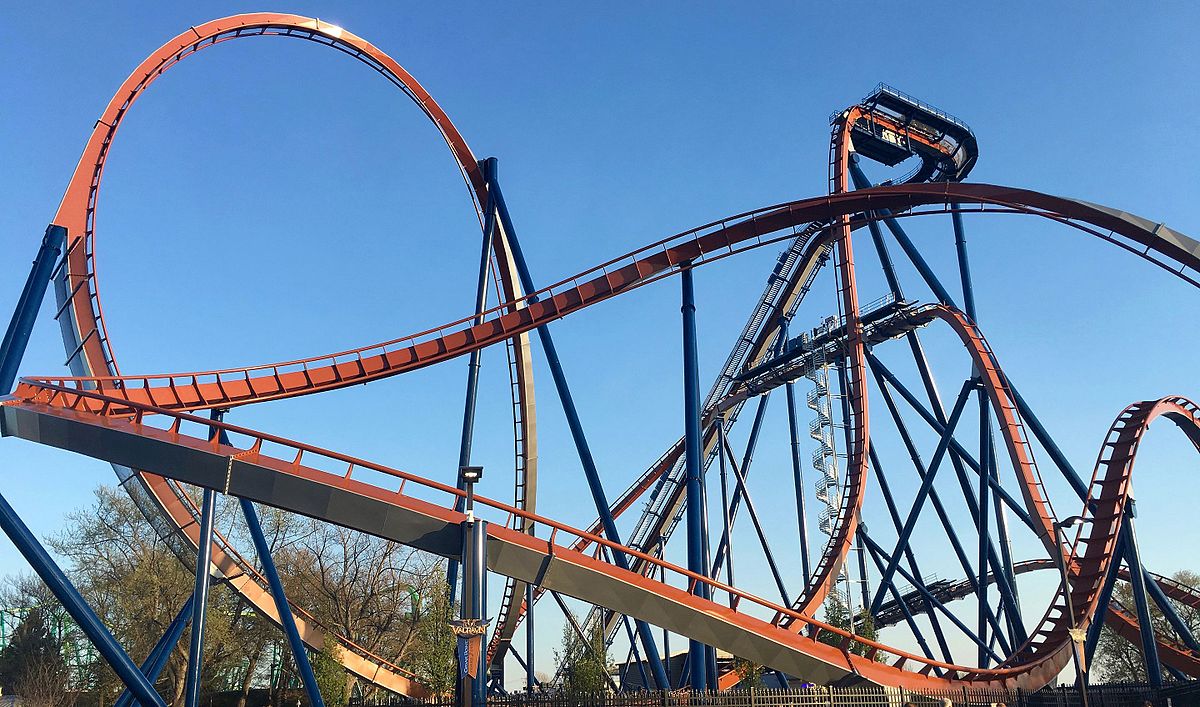Every year for about 5 or 6 years, my family and I took a trip to Hersheypark each summer. In 2011, I remember their being an advertisement for a new coaster that would become Hershey’s tallest rollercoaster. Once I saw this ad, I knew I had to return to Hershey the following year when the coaster was completed. Sure enough, the next year we returned to Hershey to ride their new attraction. Skyrush quickly became one of Hershey’s biggest attractions, and it is clear to see why.
This 212-foot monster is situated in the Comet Hollow section of the park, one of the closest sections of the park to the main entrance. What is so special about this ride is that it is now the tallest and fastest ride in the park. Also, Skyrush’s trains are the first of its kind. The train contains 8 rows of 4 seats. The two middle seats are located on the train while the two outside seats are winged, so the rider’s feet dangle with nothing below them. Each train weighs approximately 13 tons! Skyrush was built by Intamin, a highly prestigious ride manufacturer that has created several of the world’s top attractions. The ride was purposed on August 17th, 2010 and completed on May 26th, 2012. The ride was officially announced to the public on August 2nd, 2011 in the section of the park where it was planned to be built. The ride reaches a maximum speed of 75 miles per hour and a maximum height of 212 feet. The ride is 3600 feet of track; nearly three quarters of a mile! Skyrush’s bright yellow track can be seen from all over the park, as it kisses the sky far above any other ride in the park. After its completion, the park saw an incredible increase in park guests like nothing they have ever experienced before.
Skyrush begins with a 17.8 mile per hour cable lift to the top of the first hill. After plummeting 200 feet, riders reach a top speed of 75 miles per hour. It is at this point that riders experience a 5G force. This means riders feel five times heavier than their actual weight. The second airtime hill provides riders with a large negative g-force of -2G. This means riders feel two times lighter than their actual weight. The ride is a classic out and back with several airtime hills with many unexpected twists and turns that will constantly keep its riders on their toes. An out and back rollercoaster is simply classified by the fact that it goes out of the station and returns without much crossing of the tracks.
Anyone who has been on this ride knows that it is without a doubt one of the best in the park, and on a busy day it will never fail to have one of the longest waits in the park. It is the fastest and tallest ride in the park, and the g-force experience is incredible. I get tunnel vision after the drop almost every time I ride Skyrush. The only complaint I have about this ride is that the lap bar tightens at the ride goes on, so by the end, your thighs have gone through the ringer. They certainly accounted for this, because when waiting for the train to pull back into the station, the lap bar loosens once the train passes a certain point. Overall, it is a great ride, and because of that I will have to give it a 8 out of 10.



:max_bytes(150000):strip_icc()/Goliath-Six-Flags-Great-America-56a950df3df78cf772a5c963.jpg)
:max_bytes(150000):strip_icc()/ElToro-59722ed8af5d3a00112e8697.jpg)






